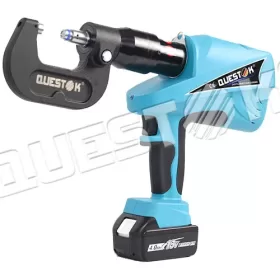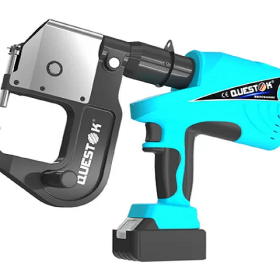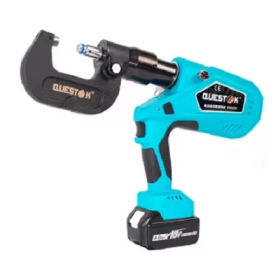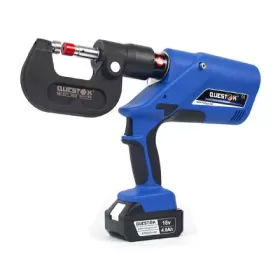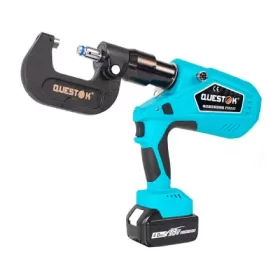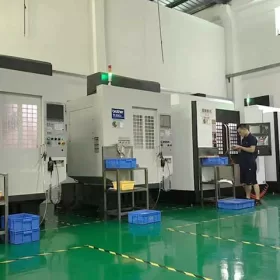Self-Piercing Rivet Guns vs. Traditional Riveting- Which Is Better?
In the realm of metalworking, the choice between self-piercing rivet (SPR) guns and traditional riveting techniques presents a fundamental decision that can profoundly impact project outcomes. While both methods share the common goal of securely joining metal components, their distinct approaches and advantages warrant careful consideration. This article delves into the intricacies of SPR guns and traditional riveting, providing a comprehensive analysis to determine which method reigns supreme.
Operating Mechanism
The primary distinction between SPR guns and traditional riveting lies in their operating mechanisms. SPR guns employ a unique punch and die system that simultaneously pierces through multiple layers of metal and forms a rivet head. In contrast, traditional riveting requires pre-drilled holes into which rivets are inserted and expanded.
Installation Speed and Efficiency
SPR guns offer unparalleled installation speed and efficiency. Since they eliminate the need for drilling, they significantly reduce labor time and production cycles. Traditional riveting, on the other hand, requires a separate drilling step, which can be labor-intensive and time-consuming.
Joint Strength and Integrity
Both SPR guns and traditional riveting techniques provide robust joint strength. However, the nature of the SPR process ensures excellent vibration resistance and durability due to the uniform material flow created during rivet formation. Traditional riveting joints may be susceptible to loosening over time due to hole deformation caused by rivet expansion.
Cost Considerations
The overall cost of using SPR guns and traditional riveting is largely dependent on the specific application and volume requirements. SPR guns typically involve a higher initial investment due to their specialized equipment and tooling. However, they can offer cost savings in the long run due to reduced labor costs and increased productivity. Traditional riveting may be more economical for small-scale projects where pre-drilling is not a significant factor.
Material Compatibility
SPR guns are compatible with a wide range of materials, including steel, aluminum, and stainless steel. They are particularly well-suited for joining thin or fragile materials where traditional riveting may cause distortion or damage. Traditional riveting is generally limited to thicker materials with pre-drilled holes.
Conclusion
The choice between self-piercing rivet guns and traditional riveting is a nuanced decision that requires careful consideration of the specific application requirements. For applications demanding high speed, efficiency, vibration resistance, and compatibility with a variety of materials, SPR guns represent the superior option. However, for smaller-scale projects or where pre-drilling is not a significant concern, traditional riveting may offer a more cost-effective solution. Ultimately, the best choice depends on a thorough analysis of the project’s unique parameters to ensure optimal results.
- Company News
- Industry News
- Tag
- Tags
-
The Advantages of Questok Rivet Guns: Precision, Efficiency, and Durability
In industrial fastening applications, the choice of tools directly impacts productivity, safety, and long-term cost-effectiveness. Questok rivet guns have emerged as a standout solution for professionals across aerospace, automotive, and construction sectors. Combining advanced engineering with user-centric design, these tools deliver unmatched performance. Below are the key advantages that make Questok rivet guns a preferred choice:
-
Rivet Gun FAQ
Rivet Gun FAQ-SPR
-
Fast Assembly and Repair With Cordless Solid Rivet Gun
Questok cordless solid rivet gun stands out as a pivotal innovation, merging portability with power to facilitate efficient and effective fastening in a myriad of applications.
-
Redifine The Role of Self-piercing Riveting Gun Machine
Self-piercing riveting adopts high-speed mechanical fastening skill that joins thin sheet materials, typically steel and aluminum alloys.
-
The Latest Innovations in Clinching Tool Design
Explore the latest innovations in clinching tool design, redefining precision, efficiency, and versatility in material joining.
-
The Application and Maintenance of Self-Piercing Rivet Guns
Delve into the applications of self-piercing rivet guns in the automotive and aerospace industries and reveal the essential maintenance practices that ensure their accuracy and efficiency.
-
Rivetless Riveting Gun for Ventilation Duct Projects
The ventilation duct rivetless gun is a tool for riveting ventilation ducts without rivets.
-
Guide to Using Self-Piercing SPR Riveting Gun
In the automotive industry, self-piercing SPR (Self-Piercing Rivet) riveting guns are commonly used for joining metal components in vehicle bodies, including BMW vehicles.
-
Rivet Gun FAQ
Rivet Gun FAQ-SPR
-
User-Friendly Features- Making Riveting Easy with Electric Blind Rivet Guns
Electric blind rivet guns are essential tools for industrial applications, providing a convenient and efficient way to fasten materials together. These tools have significantly advanced, incorporating user-friendly features that enhance their functionality and ease of operation. This article explores several key user-friendly features of electric blind rivet guns, highlighting how they simplify and streamline the […]
-
Unleashing Potential- Unlocking the Versatility of a Handheld Rivet Gun
In the realm of construction and fabrication, precision and efficiency reign supreme. Among the indispensable tools that empower craftsmen and DIY enthusiasts alike, the handheld rivet gun stands as a beacon of versatility and innovation. This unassuming device harbors a hidden potential that belies its compact form, offering a plethora of applications that unlock unbounded […]
-
Versatile Fastening- Applications of the Handheld Rivet Gun Across Industries
In the realm of fastening, the handheld rivet gun stands as a testament to ingenuity and versatility. Its ability to effortlessly join materials with sheer strength and permanence has revolutionized manufacturing and construction processes, leaving an enduring mark on diverse industries. Aerospace: Where precision and reliability are paramount, the rivet gun shines. In aircraft assembly, […]
-
The Role of Automation in Electric Rivetless Clinching
Electric rivetless clinching (ERC) is a lightweight joining process that eliminates the need for rivets or other fasteners. This can lead to significant cost savings and increased production efficiency. Automation plays a critical role in ERC, enabling high-speed and high-volume production. Automated Feed Systems Automated feed systems are used to accurately position the two workpieces […]
-
Why Choose a Universal Self-Piercing Riveting Gun for Your Projects?
In the realm of construction and fabrication, riveting guns stand as indispensable tools for creating secure and robust connections. Among the various types available, universal self-piercing riveting (SPR) guns have emerged as a game-changer due to their versatility and efficiency. This article will delve into the compelling reasons why choosing a universal self-piercing riveting gun […]
-
Why Choose Stainless Steel Hollow Rivets for Your Projects?
In the world of industrial manufacturing, choosing the right fasteners for your projects is crucial for ensuring longevity and reliability. Among the many options available, stainless steel hollow rivets stand out as a superior choice for a wide range of applications. This article delves into the compelling reasons why stainless steel hollow rivets are the […]
-
Top Trends in Electric Rivetless Clinching Guns
In the realm of fastening technology, electric rivetless clinching guns have emerged as a revolutionary solution for a wide range of industrial applications. These advanced tools offer several преимущества and capabilities, revolutionizing the way businesses approach their fastening needs. Adoption of Brushless Motors Brushless motors have gained significant traction in electric rivetless clinching guns due […]

